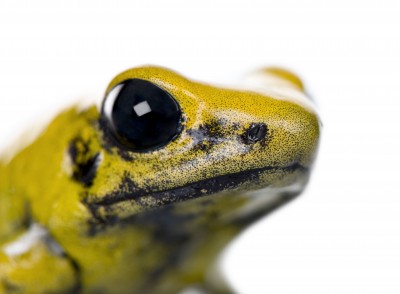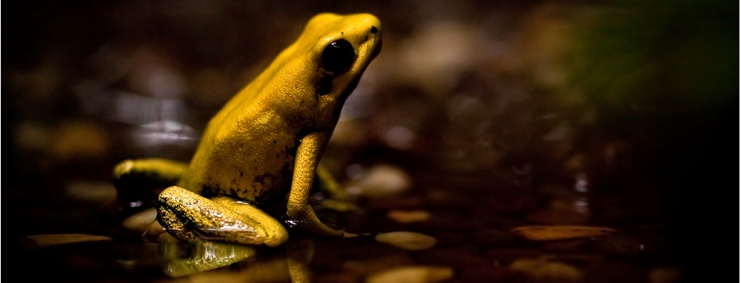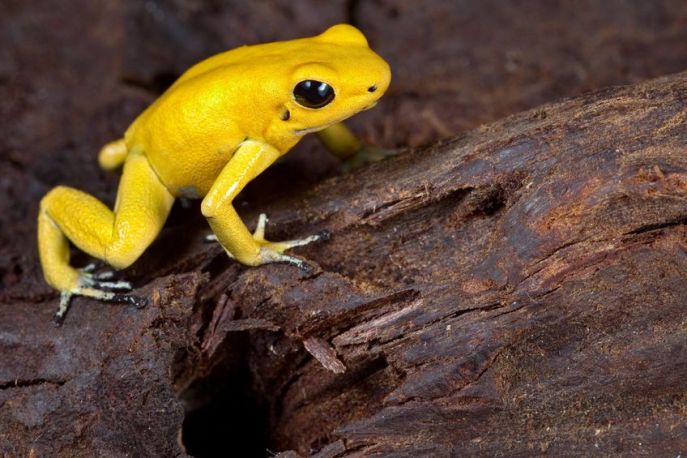Adaptation
Every organism has had to adapt to its
surrounding or natural selection will have made sure to
eradicate it. The Golden Poison Frog has made numerous
adaptations to ensure its survival in the wild. Unfortunately
due to human activity the frog has had a tough time surviving in
its already minimized habitat.
.jpg) Photo courtesy of Victor Fabio Luna-Mora
Photo courtesy of Victor Fabio Luna-Mora
Frogs adapted to their habitat by
developing lungs to live on land. This gave them the ability to
take in oxygen to supply its cells for basic functional needs. They also contain an endoskeleton
containing numerous bones and muscles
to help support for their mass on land. Without this gravity
would make them appear to be an amoeboid structure of skin
tissue on the ground. This skeleton works with their muscular
system as well to perform all types of movements including the
ability to hop or jump away from its predators whenever it feels
threatened. They also have an extremely developed compound eye
that allows for them to see their surrounding very vividly. This
gives them the ability to see both predators and prey from afar
so that it knows when it is time for lunch or time to get out!
As a tadpole it lives a mainly herbivorous lifestyle with a much
longer intestinal tract than when it is in the mature stage.
After about 10-14 weeks they undergo metamorphosis and turn into
a froglet. During metamorphosis the
frog will experience a shrinking of the intestinal tract to
reflect its carnivorous lifestyle.
However, one of the most distinct adaptations for this frog compared to all other frogs is its vibrant skin color. Because of its toxicity it developed a type of coloration more commonly as aposematic coloration. This lets all predators know to be aware of it because if ingested it will prove to be fatal. Through evolution the sodium channel regulatory site in their nerves and muscle cells were altered so the frog could be immune to the Batrachotoxin.
To visit the Nutrition page click here
For main page click here


